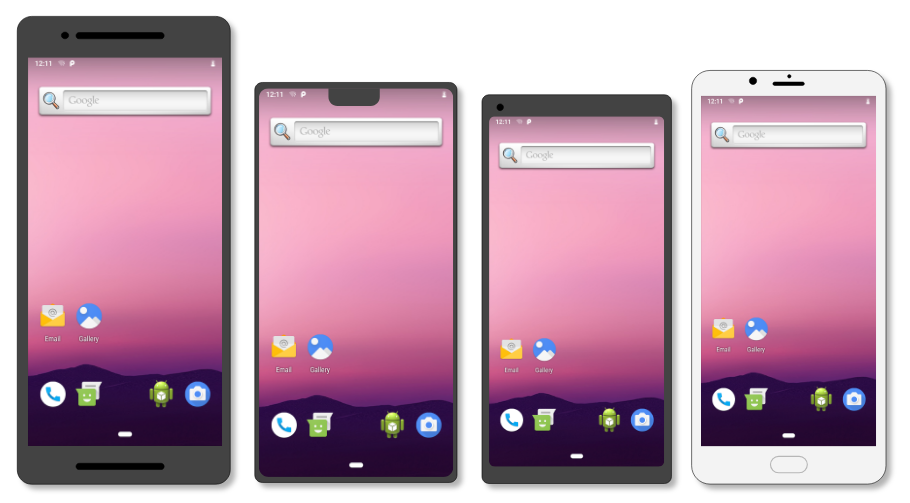Generic System Image ( GSI ) — это чистая реализация Android с немодифицированным кодом Android Open Source Project (AOSP), которую можно запускать на различных устройствах Android.
Разработчики приложений могут устанавливать и запускать новейшие версии Android GSI для тестирования приложений на различных устройствах Android, используя GSI из разных версий ОС Android, включая сборки Developer Preview и Beta. Добавление GSI в процессы верификации и тестирования может дать вам ряд дополнительных преимуществ:
- Более широкое покрытие тестированием на большем количестве реальных устройств
- Больше времени на устранение проблем совместимости приложений
- Больше возможностей исправить проблемы совместимости в Android, о которых сообщают разработчики приложений
Проект GSI имеет открытый исходный код и помогает улучшить экосистему Android, предоставляя больше возможностей для улучшения качества приложений и ОС перед каждым выпуском Android.

GSI-инструменты включают в себя те же основные системные функции для всех устройств, на которых они установлены. Другими словами, GSI-инструмент не включает в себя настройки производителя устройства. В связи с этим вы можете столкнуться с различиями в поведении в следующих ситуациях:
- Взаимодействия, в которых задействован пользовательский интерфейс
- Рабочие процессы, требующие более новых аппаратных функций
Проверьте соответствие устройства
GSI могут функционировать только на устройствах со следующими характеристиками:
- Загрузчик разблокирован.
- Полностью совместим с высокими частотами.
- Выпущено с Android 9 (уровень API 28) или выше. Устройства, обновлённые до Android 9 с более ранней версии, могут поддерживать или не поддерживать GSI.
Чтобы определить, может ли ваше устройство использовать GSI и какую версию ОС GSI следует установить, выполните следующие действия:
Проверьте поддержку Treble, выполнив следующую команду:
adb shell getprop ro.treble.enabled
Если ответ —
false, устройство несовместимо с GSI, и вам не следует продолжать. Если ответ —true, перейдите к следующему шагу.Проверьте поддержку кросс-версий, выполнив следующую команду:
adb shell cat /system/etc/ld.config.version_identifier.txt \ | grep -A 20 "\[vendor\]"
В выходных данных найдите в разделе
[vendor]namespace.default.isolated.Если значение этого атрибута равно
true, то устройство полностью поддерживает Vendor Native Development Kit (VNDK) и может использовать любую версию операционной системы GSI, более новую, чем версия ОС на устройстве. По возможности используйте последнюю доступную версию ОС GSI.Если значение атрибута равно
false, то устройство не полностью совместимо с VNDK и может использовать только образ GSI для той же версии ОС, что и на устройстве. Например, устройство Android 10 (API версии 29), несовместимое с VNDK, может загрузить только образ Android 10 GSI.Тип архитектуры ЦП GSI должен соответствовать архитектуре ЦП устройства. Чтобы найти правильную архитектуру ЦП для образа GSI, выполните следующую команду:
adb shell getprop ro.product.cpu.abi
Используйте выходные данные, чтобы определить, какой образ GSI использовать при прошивке устройства. Например, на Pixel 5 выходные данные будут указывать на архитектуру процессора
arm64-v8a, поэтому следует использовать тип GSIarm64.
Загрузить GSI
Есть несколько способов получить GSI, в зависимости от ваших потребностей в разработке:
- Для Android Preview GSI и Android GSI с GMS загрузите образы со страницы выпуска GSI .
Для готовых образов GSI без приложений GMS загрузите образы с сайта AOSP CI:
Чтобы создать Android GSI без GMS, загрузите исходный код с AOSP и создайте свои GSI.
Установить GSI
Установка GSI зависит от устройства. За точным списком инструментов и процедур обратитесь к производителю вашего устройства. Для устройств Google Pixel, таких как Pixel 3 и более поздние модели, существует несколько способов установки:
- Ручная прошивка образов GSI: см. Требования к прошивке GSI
- Использование динамического обновления системы (DSU) для устройств, работающих под управлением Android 10 или более поздней версии: см. страницу динамических обновлений системы.
Оставьте отзыв
Глобальные индексы (GSI) предназначены для помощи в проверке ваших приложений на Android. Мы будем благодарны за ваши отзывы об изображениях, инструментах и процессе использования GSI на ваших устройствах.
Чтобы уведомить нас об ошибках или запросах на новые функции, используйте специальный компонент отслеживания ошибок для GSI.

